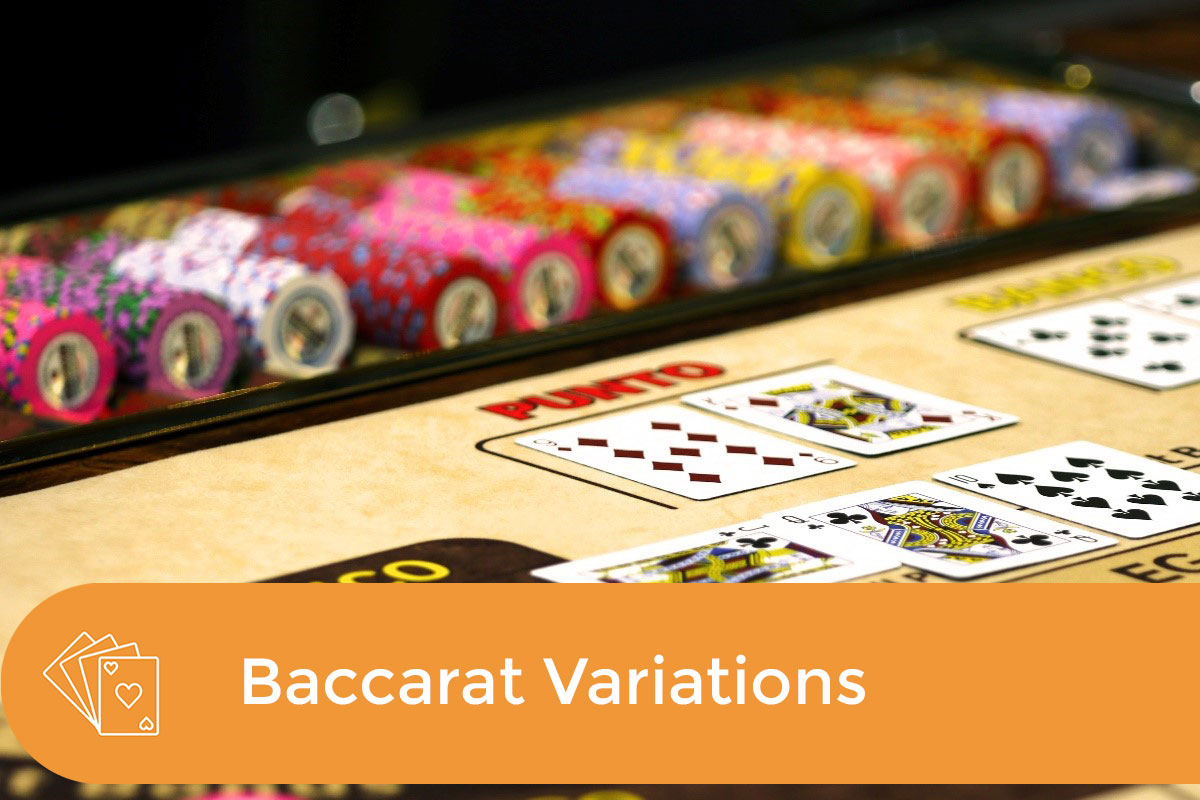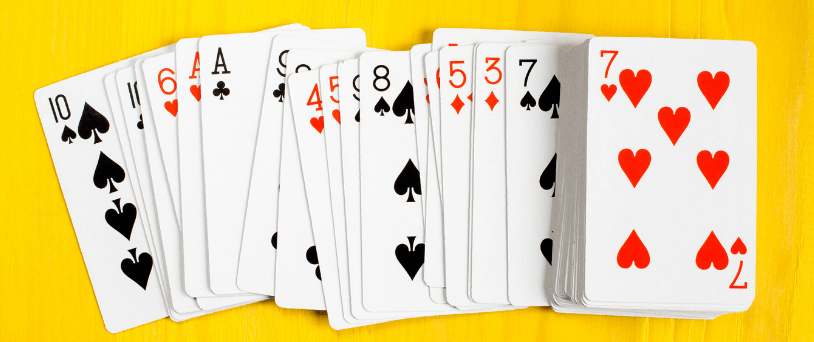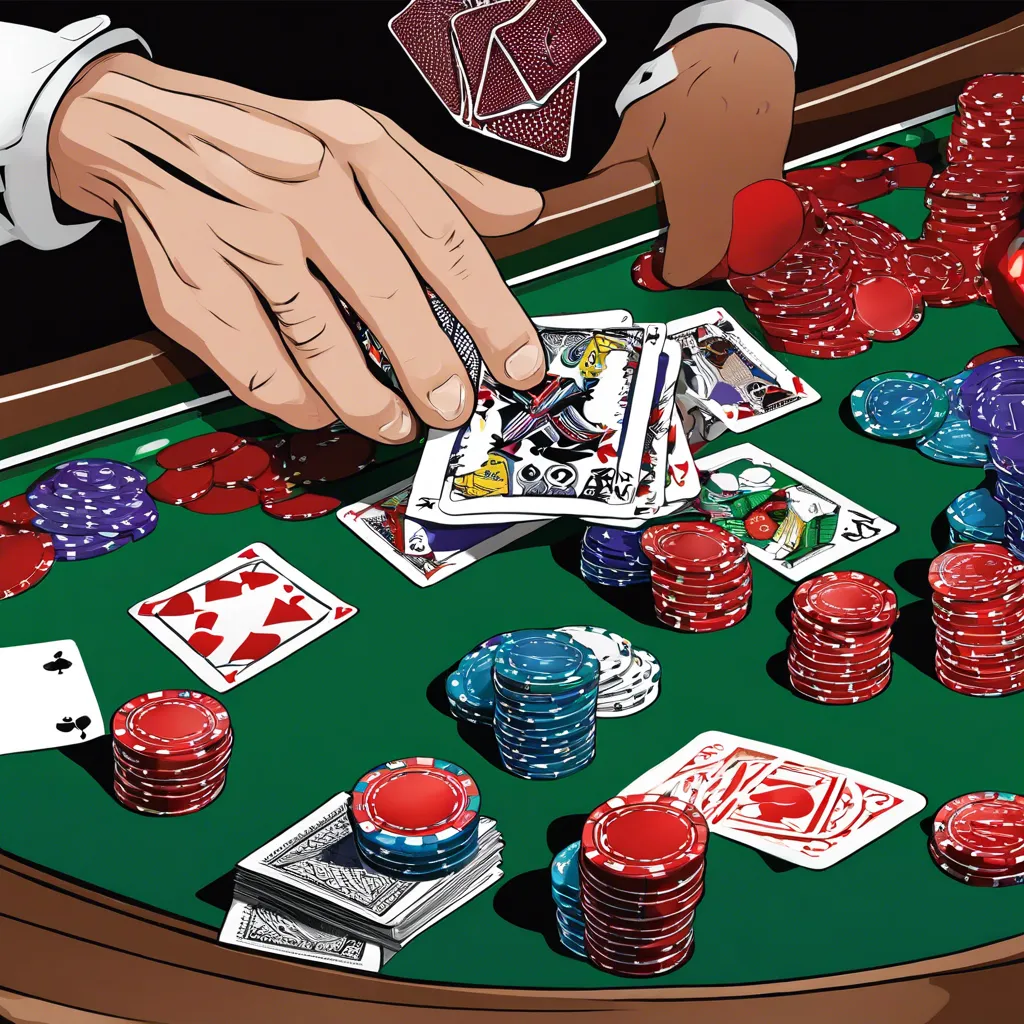Baccarat A Comprehensive Guide
Bacara – Baccarat, a captivating card game, has captivated players for centuries. From its origins in Italy to its modern presence in casinos worldwide, this guide delves into the intricacies of the game, exploring its rules, strategies, and cultural context. Understanding the different variations, betting strategies, and house edge is crucial for any player looking to maximize their enjoyment and potential winnings.
This comprehensive overview covers everything from the basic gameplay and terminology to the technological advancements shaping the modern baccarat experience. We will also explore the subtle nuances of etiquette, the casino environment, and the cultural significance of this timeless game.
Introduction to Baccarat
Baccarat, a popular card game in casinos worldwide, is a relatively straightforward game to learn, yet can present complexities in strategy. Its simple premise often hides a layer of nuanced decision-making for players. Understanding the origins and basic rules is crucial for any participant hoping to grasp the game’s allure.
Baccarat’s appeal stems from its combination of chance and a surprisingly accessible structure. The game’s history, spanning centuries, reveals its evolution from a game of high-stakes elegance to a widely-played entertainment. This document will explore the game’s core mechanics, providing a comprehensive introduction to the captivating world of Baccarat.
Definition of Baccarat
Baccarat is a casino card game where players bet on which of two hands, the Player or the Banker, will have a hand value closest to nine. It’s a game of chance, yet strategic considerations can be applied to enhance one’s betting approach.
Origins and History of Baccarat
Baccarat’s origins trace back to Italy in the 15th century, evolving to become a popular game in France and subsequently worldwide. Its early forms were likely played among the wealthy elite, with a focus on elegance and refinement. The game’s transition to modern casino play saw the addition of structured rules and betting options. The modern game has preserved many of its original elements but has been adapted to accommodate the needs of a wider audience.
Basic Rules and Gameplay of Baccarat
The game involves two hands, the Player and the Banker, each dealt cards from a standard 52-card deck. The aim is to predict which hand will come closest to nine. The value of cards follows a simple system: numbered cards have their face value, face cards (Jack, Queen, King) are zero, and Aces are one. Once both hands are dealt, the totals are calculated, and the hand closest to nine wins. If the total exceeds nine, the tens digit is discarded (e.g., a total of 10 becomes 0). The rules for drawing additional cards are defined in the game.
Possible Outcomes in a Baccarat Round
| Outcome | Description |
|---|---|
| Player Wins | The Player hand’s total is closer to nine than the Banker hand. |
| Banker Wins | The Banker hand’s total is closer to nine than the Player hand. |
| Tie | Both the Player and Banker hands have the same total. |
These outcomes represent the fundamental possibilities in a typical Baccarat round. Understanding these results is essential for comprehending the game’s dynamics.
Types of Baccarat: Bacara
Baccarat, while seemingly straightforward, offers several variations that affect the gameplay and betting strategies. Understanding these differences is crucial for players aiming to maximize their chances of success. Different variations cater to diverse preferences and play styles.
Baccarat Variations
Baccarat encompasses various types, each with subtly different rules and betting options. These variations, while sharing the core principles of the game, offer unique gameplay experiences and potentially different payout structures.
- Punto Banco Baccarat: This is the most prevalent form of Baccarat. Players bet on either the banker’s or the Player’s hand, and the winning hand is determined by the closest total to nine. The house edge in Punto Banco is generally considered low.
- Mini Baccarat: A streamlined version of Baccarat, Mini Baccarat typically involves fewer players and simpler betting options. The game uses fewer cards and often has a faster pace than the standard Punto Banco version. This adaptation suits players who prefer a quicker, less complex experience.
- Baccarat Chemin de Fer: This variation of Baccarat features a more active player participation. One player takes the role of the “banker,” and other players act as “punters” betting on the banker or player hand. The banker’s role involves card dealing and determining the winner.
- Baccarat Banque: Similar to Chemin de Fer, Banque features a designated “banker” who controls the game and receives a percentage of the winnings. However, the banker is chosen from among the players. Players place bets on either the banker’s or player’s hands.
Comparative Analysis of Baccarat Variations
| Variation | Key Differences | Specific Bets |
|---|---|---|
| Punto Banco | Most common variant; fixed banker commission; player/banker hands are independent. | Banker, Player, Tie. |
| Mini Baccarat | Simplified version; faster pace; fewer players; sometimes reduced betting limits. | Banker, Player, Tie. |
| Chemin de Fer | Players take turns acting as bankers; more active player involvement in card dealing. | Banker, Player, Tie, and more complex bets that depend on the player’s role. |
| Baccarat Banque | Players can become the banker, player-chosen banker, or fixed commission on banker wins. | Banker, Player, Tie, and more complex bets that depend on the banker’s role. |
Specific Bets in Each Variation
The betting options available in each Baccarat variation often mirror each other but may differ in complexity or availability. A key consideration is the house edge associated with each bet, as this can impact long-term profitability.
- Punto Banco: Standard bets on the Banker, Player, or Tie are common. There are often side bets available, which typically have higher house edges.
- Mini Baccarat: Similar to Punto Banco, but with simpler betting options and often reduced betting limits. The range of available bets may be more limited than in the standard version.
- Chemin de Fer and Baccarat Banque: These variations introduce more complex betting options that are directly tied to the role of the banker or the player acting as the banker, adding strategic depth to the game.
Baccarat Strategy and Techniques
Baccarat, despite its seemingly straightforward nature, offers various strategies and techniques for players to potentially improve their odds. Understanding the underlying probability and employing appropriate betting systems can be beneficial, but it’s crucial to remember that no strategy guarantees consistent wins. Ultimately, luck plays a significant role in this game of chance.
Strategies for Playing Baccarat
Different approaches can be adopted while playing Baccarat, though none are guaranteed to consistently win. Some common strategies include focusing on the Banker bet, which has a slightly higher probability of winning than the Player bet, or alternating bets between the Player and Banker. The use of a strategy should be seen as a tool to manage the risk and potential rewards rather than a guarantee of victory.
Probability in Baccarat
The concept of probability is fundamental to understanding Baccarat. The probability of a Player win, Banker win, or Tie outcome can be calculated based on the rules and the random nature of the card draws.
Betting Systems in Baccarat
Various betting systems are used in Baccarat, each with its own set of rules and potential benefits. These systems, like the Martingale system, aim to recover losses by increasing bets after losses. It’s important to note that such systems do not change the underlying probability of outcomes. They primarily impact the player’s bankroll management.
- Martingale System: This system involves doubling the bet after each loss to recover losses with a subsequent win. However, this system requires a substantial bankroll to withstand a series of losses, as doubling bets can rapidly escalate the stakes. A common example is betting $1 on the Player, then doubling to $2 if the Player loses, then $4 if the Player loses again, and so on.
- Fibonacci System: This system uses the Fibonacci sequence, where each number is the sum of the two preceding ones (1, 1, 2, 3, 5, 8, etc.). Bets are placed according to this sequence, with the potential to increase bets over time. An example sequence might be betting $1, then $1, then $2, then $3, and so on, depending on the outcome of each round.
- Fixed Percentage System: This approach involves betting a fixed percentage of your bankroll on each round. For example, if a player has a $100 bankroll and chooses to bet 10% on each round, they would bet $10 on each round, regardless of the outcome of previous rounds.
Calculating Probabilities for Baccarat Outcomes, Bacara
The probability of different outcomes in Baccarat can be calculated using basic probability theory. The Banker bet, for example, has a higher probability of winning due to the rules of the game.
| Outcome | Probability (approximately) |
|---|---|
| Player Win | 45.8% |
| Banker Win | 44.6% |
| Tie | 9.6% |
The precise probabilities can vary slightly depending on the specific rules of the casino or game variant.
Baccarat Odds and Payouts
Baccarat, a game of chance, relies heavily on understanding the payouts associated with different outcomes. Knowing the odds and how they are calculated is crucial for responsible gameplay and informed decision-making. The payouts are designed to offer a balanced experience for both the player and the house.
Payout Structure for Player and Banker Bets
Understanding the payout structure for player and banker bets is fundamental to appreciating the house edge. These payouts are designed to create a favorable environment for the casino while providing a reasonable chance for players to win. The structure is largely consistent across casinos, although minor variations might exist.
- Player Bet: A win on the player’s hand results in a 1:1 payout. This means a $10 bet yields a $20 return (including the original stake). This straightforward payout encourages players to wager on the player’s hand.
- Banker Bet: A win on the banker’s hand results in a 1:1 payout, also. A $10 bet will yield a $20 return (including the original stake). This encourages bets on the banker’s hand.
Payout for Tie Bets
Tie bets are a unique aspect of Baccarat, offering a different payout structure compared to player or banker bets.
- Tie Bet: A tie bet, if successful, has a significantly higher payout. A 1:8 or 1:9 payout is common, meaning a $10 bet could return $80 to $90 (including the original stake), highlighting the higher risk involved compared to other bets.
Comparison of Payouts Across Different Bets
The following table summarizes the payouts for different bets in Baccarat. This comparison helps players understand the potential returns for each type of wager.
| Bet Type | Payout (Win) |
|---|---|
| Player | 1:1 |
| Banker | 1:1 |
| Tie | 1:8 or 1:9 |
Strategies for Maximizing Potential Winnings
While Baccarat is fundamentally a game of chance, some strategies can help players manage their bets and potentially increase their chances of success. Understanding the house edge and the probabilities associated with each bet is essential to any successful strategy.
- Bankroll Management: Set a budget before starting and stick to it. Never chase losses. This is a crucial element in the long-term success of any casino game.
- Risk Assessment: Evaluate the risk associated with each bet and choose accordingly. A player should weigh the potential payout against the probability of winning. A well-thought-out strategy is key.
- Understanding the Odds: Knowing the probabilities of each outcome is vital to managing your bets. Researching these probabilities allows for better-informed decisions. This understanding can significantly enhance your strategy.
Baccarat House Edge

Source: baccaratprotips.com
The house edge in baccarat represents the inherent advantage the casino holds over players. Understanding this edge is crucial for responsible gambling and making informed decisions about your betting strategy. It’s not a fixed value but varies based on several factors.
The house edge in baccarat, while seemingly small, can significantly impact a player’s long-term profitability. This is due to the fact that, over a large number of rounds, the casino’s edge compounds, leading to a predictable loss for the player. This predictable loss is inherent in the game’s structure.
Factors Influencing the House Edge
The house edge in baccarat isn’t a static figure; several variables influence it. The most important of these factors are the betting options available to the player. The game’s design, with its inherent probabilities, determines the long-term advantage the casino holds over the player.
Betting Options and Their Impact
Different betting options in baccarat lead to different house edges. The house edge varies depending on whether you bet on the Player, Banker, or Tie. Understanding these variations is key to maximizing your potential return.
- Player Bet: This bet, while attractive, offers a slightly higher house edge than the Banker bet. The player’s hand has a higher probability of winning than the Banker’s hand.
- Banker Bet: This bet, with a slightly lower house edge than the Player bet, is the most common choice for players. The Banker’s hand wins more often.
- Tie Bet: This bet has the highest house edge of the three, significantly reducing the player’s potential return. The tie outcome has the lowest probability.
Table of Factors Influencing House Edge
| Factor | Explanation |
|---|---|
| Betting Option | The choice between betting on the Player, Banker, or Tie affects the house edge significantly. |
| Casino Rules | Specific casino rules, like commission rates on Banker bets, can alter the house edge. |
| Game Structure | The inherent probabilities built into the game’s design are fundamental to the house edge. |
Impact on Player Profitability
The house edge directly impacts player profitability. A higher house edge means a lower expected return for the player and vice versa. For example, a player who consistently bets on the Player hand will experience a slightly lower return than someone betting on the Banker. This is due to the differing probabilities of each outcome.
The house edge in baccarat is an integral part of the game’s structure. It represents the long-term advantage the casino has over the player, which affects profitability. While players can’t eliminate the house edge, understanding its components allows for informed decision-making and potentially improved outcomes.
Baccarat Etiquette and Procedures
Baccarat, a game of chance, is played with a certain level of formality. Understanding and adhering to proper etiquette enhances the gaming experience for all players and ensures a smooth flow of the game. This section articulates the expected conduct and procedures at a Baccarat table.
Proper etiquette is crucial for maintaining a respectful and organized atmosphere at the table. Observing these guidelines ensures a positive experience for everyone involved. Players should be mindful of their actions and avoid disruptive behaviors.
Proper Table Conduct
Players should be mindful of their actions and avoid disruptive behaviors. This includes maintaining a respectful tone and avoiding loud conversations or boisterous displays. Players should be prepared to place their bets promptly and avoid prolonged delays that may affect the flow of the game. Paying attention to the dealer’s instructions and following the sequence of play will ensure a positive and productive gaming experience.
Betting Procedures
Placing bets in Baccarat is a straightforward process, but it is essential to understand the rules to avoid errors. Players must clearly indicate their bet amount and the outcome they are wagering on (Player, Banker, or Tie). Betting should be done only when the dealer is prompting bets, ensuring all players have an equal opportunity to place their bets. This minimizes confusion and maintains order at the table.
Do’s and Don’ts
- Do approach the table calmly and attentively. Be prepared to place your bets swiftly and precisely when the dealer prompts.
- Do listen carefully to the dealer’s instructions and follow the sequence of play. This helps maintain a smooth and organized game flow.
- Do be mindful of the other players at the table, maintaining a respectful distance and avoiding disruptive actions.
- Do ensure that your bets are visible and understandable to the dealer.
- Don’t engage in conversations or other distractions that could disrupt the game.
- Don’t place bets after the dealer has begun dealing cards.
- Don’t argue with the dealer’s decisions or instructions. Questions should be directed to the casino’s supervisor.
- Don’t touch or interfere with other players’ bets.
Example Table of Baccarat Etiquette
| Situation | Acceptable Behavior | Unacceptable Behavior |
|---|---|---|
| The dealer is prompting bets | Players place bets promptly and clearly | Players argue about the betting process or delay excessively |
| Cards are being dealt | Players observe the game calmly and attentively | Players whisper or talk loudly during the dealing process |
| Outcome is announced | Players accept the results calmly | Players challenge the dealer’s decision or argue with other players |
| Winning/Losing | Players congratulate or console each other with a quiet gesture | Players celebrate loudly or become aggressive when losing |
Baccarat Terminology
Baccarat, a popular casino card game, employs specific terminology that players should understand. Familiarity with these terms enhances comprehension of the game’s rules and gameplay. This glossary provides concise definitions to aid in learning and understanding the nuances of Baccarat.
Baccarat Glossary
This section presents a comprehensive glossary of terms used in Baccarat, categorized for clarity and easy reference. Understanding these terms is crucial for navigating the game effectively.
| Term | Definition |
|---|---|
| Punto Banco | The two betting options in Baccarat, Punto (Player’s hand) and Banco (Banker’s hand). Players bet on which hand will have a point total closest to nine. |
| Player Hand | The hand of the player, one of the two hands in the game. |
| Banker Hand | The hand of the banker, the other of the two hands in the game. |
| Natural | A hand totaling eight or nine on the first two cards dealt. This results in an immediate win for that hand. |
| Tie | A situation where both the Player and Banker hands have the same point total. |
| Card Values | Cards 2 through 9 are counted at face value. 10s and face cards (Jack, Queen, King) are counted as zero. Ace is counted as one. |
| Third Card Rule | A rule determining when a third card is drawn for each hand. It is based on the value of the first two cards. |
| Commission | A small percentage is taken from the Banker’s winning bets. |
| Tie Bet | A wager is placed on the outcome being a tie between the Player and Banker hands. |
| Betting Limits | The minimum and maximum amounts a player can wager on each hand. |
| Shoe | The device used to hold and deal the cards in Baccarat. |
| Cut Card | A special card is used to signal the end of a shoe’s use. |
| Winning Hand | The hand with a point total closest to nine, or a natural. |
Baccarat and the Casino Environment
Baccarat, a popular casino game, is often played in a specific environment designed to enhance the experience and encourage engagement. The atmosphere and layout of the Baccarat tables play a significant role in the overall casino experience. This section explores the typical casino environment where Baccarat is typically played.
Casino Environment for Baccarat
The casino environment for Baccarat is meticulously designed to create an atmosphere conducive to both players and dealers. Lighting, music, and décor are carefully selected to provide a relaxed and engaging experience. The tables are typically located in areas with high visibility, allowing patrons to easily observe the game in progress.
Atmosphere and Ambiance of Baccarat Tables
The atmosphere around Baccarat tables is often characterized by a calm, focused energy. The sounds of chips being counted, the clinking of dice, and the murmurs of conversations create a unique, yet not overwhelming, ambience. Soft lighting and appropriate background music, usually low volume, contribute to a sense of quiet excitement. The overall design often employs subtle elegance and sophistication to maintain a high-end atmosphere.
Typical Casino Layouts Featuring Baccarat Tables
Baccarat tables are often situated in high-traffic areas of casinos, usually near other popular games. Casino layouts typically feature a mix of table games, including Baccarat, Blackjack, Roulette, and Poker, spread throughout the casino floor. A common layout includes strategically placed Baccarat tables near bars or food service areas, allowing patrons to easily access refreshments while observing the game. The proximity to other games can also lead to a broader mix of patrons, some of whom may be observing Baccarat for the first time. Baccarat tables are often grouped in a specific section of the casino. The grouping may also be close to the casino’s entrance or VIP area.
Typical Procedures and Rules for Casino Baccarat Games
The procedures and rules for Baccarat games are displayed on the table, typically near the dealer. Players must adhere to these rules, as set by the casino. A typical Baccarat game involves the placement of bets on either the Banker or Player hand, or a Tie. The dealer then deals cards according to established rules, and the hand with the value closest to nine wins. The house maintains a commission on Banker wins, influencing the payout and house edge. Casinos often provide clear signage and instructions, ensuring all players understand the procedures before placing bets. Dealers are trained to guide players and answer questions while maintaining a professional and efficient demeanor.
Baccarat and its Cultural Significance
Baccarat, a game of chance with roots in Italy, has transcended its origins to become a global phenomenon, adopted and adapted within diverse cultural contexts. Its presence in various societies reflects its intriguing appeal, often intertwined with social rituals, gambling traditions, and broader cultural narratives. This section explores the multifaceted cultural context of Baccarat, its role in different societies, and its intriguing presence in popular culture.
The cultural significance of Baccarat lies not only in its gameplay but also in its association with luxury, social status, and entertainment. Its evolution within different societies reflects varying interpretations and adaptations, showcasing its ability to adapt to diverse cultural norms and aesthetics.
Cultural Context of Baccarat
Baccarat’s presence in different regions varies, reflecting the distinct cultural values and societal norms of those regions. In some cultures, Baccarat is seen as a game of high stakes and prestige associated with wealthy individuals and elite social circles. In other cultures, it might be more accessible and integrated into broader social gatherings, fostering a sense of community and camaraderie.
Role of Baccarat in Different Cultures
The role of Baccarat within different cultures often aligns with prevailing social dynamics and values. In some cultures, it may be a significant part of high-stakes gambling traditions, reflecting a culture’s appreciation for wealth and status. In other regions, it may serve as a form of entertainment during social gatherings, emphasizing camaraderie and leisure.
Baccarat in Popular Culture
Baccarat has found its way into various aspects of popular culture, often portrayed as a symbol of wealth, luxury, and sophistication. Movies, television shows, and literature have frequently featured Baccarat, often highlighting its connection to lavish lifestyles and high-stakes environments. For instance, fictional depictions of casinos and high society often incorporate Baccarat tables as a visual representation of wealth and intrigue.
Historical References to Baccarat
Historical accounts reveal Baccarat’s evolution alongside societal shifts and cultural developments. Its emergence within specific historical periods often reflects prevailing social attitudes towards gambling and entertainment. Early accounts highlight its adoption by the elite and its association with social gatherings, showcasing the evolving relationship between Baccarat and different social strata. Further research into historical documents and archives can provide deeper insights into Baccarat’s early development and its adaptation within different cultural contexts.
Baccarat and Technology

Source: gamerules.com
Baccarat, a game steeped in tradition, has embraced technological advancements, enhancing the player experience and streamlining casino operations. The integration of technology has transformed how the game is played, managed, and tracked, impacting everything from game mechanics to overall casino efficiency.
Technology has fundamentally altered the experience of playing Baccarat, impacting both the physical casino environment and the online realm. This evolution allows for a greater degree of precision, security, and accessibility for players. The advantages extend beyond the player experience, affecting the efficiency and organization of the casino.
Integration of Technology in Baccarat Tables
Technological advancements have significantly altered the way Baccarat tables function. Modern Baccarat tables often incorporate sophisticated electronic systems, enabling automatic card shuffling and dealing. This eliminates the need for human intervention in these crucial processes, improving accuracy and reducing the risk of human error. This, in turn, fosters greater player confidence in the fairness and integrity of the game.
Examples of Technology in Baccarat
Electronic shufflers, controlled by computer programs, are a common example. These machines ensure the randomness of the card deck, upholding the integrity of the game. Additionally, many casinos now use electronic display systems that provide real-time updates on game results, player statistics, and odds. These systems improve transparency and accessibility for both players and casino staff.
Technology’s Influence on Baccarat Gameplay
Technology significantly influences Baccarat gameplay, both directly and indirectly. Automated systems for card dealing and shuffling minimize errors and improve game speed. Indirectly, the availability of real-time data and player statistics on displays enhances player decision-making, enabling them to track trends and adjust their strategy as needed.
Technology for Managing and Tracking Baccarat Games
Casinos utilize sophisticated software programs to manage and track Baccarat games. These programs record all game data, including player bets, payouts, and game outcomes. This data is invaluable for analyzing game performance, identifying potential irregularities, and managing the overall efficiency of the Baccarat operations. Reporting tools can provide comprehensive summaries, helping to monitor profitability and player trends. Furthermore, these systems often integrate with other casino management systems, providing a unified view of all casino activities.
Closing Summary

Source: baccaratpredictionsoftware.com
In conclusion, baccarat offers a unique blend of chance and strategy. While the house edge presents a constant challenge, understanding the rules, variations, and potential strategies can enhance the player’s experience and, hopefully, improve their odds. This detailed guide has provided a thorough examination of all facets of baccarat, from its history and gameplay to the modern casino environment and cultural context. We hope this exploration has provided valuable insight into the fascinating world of baccarat.





